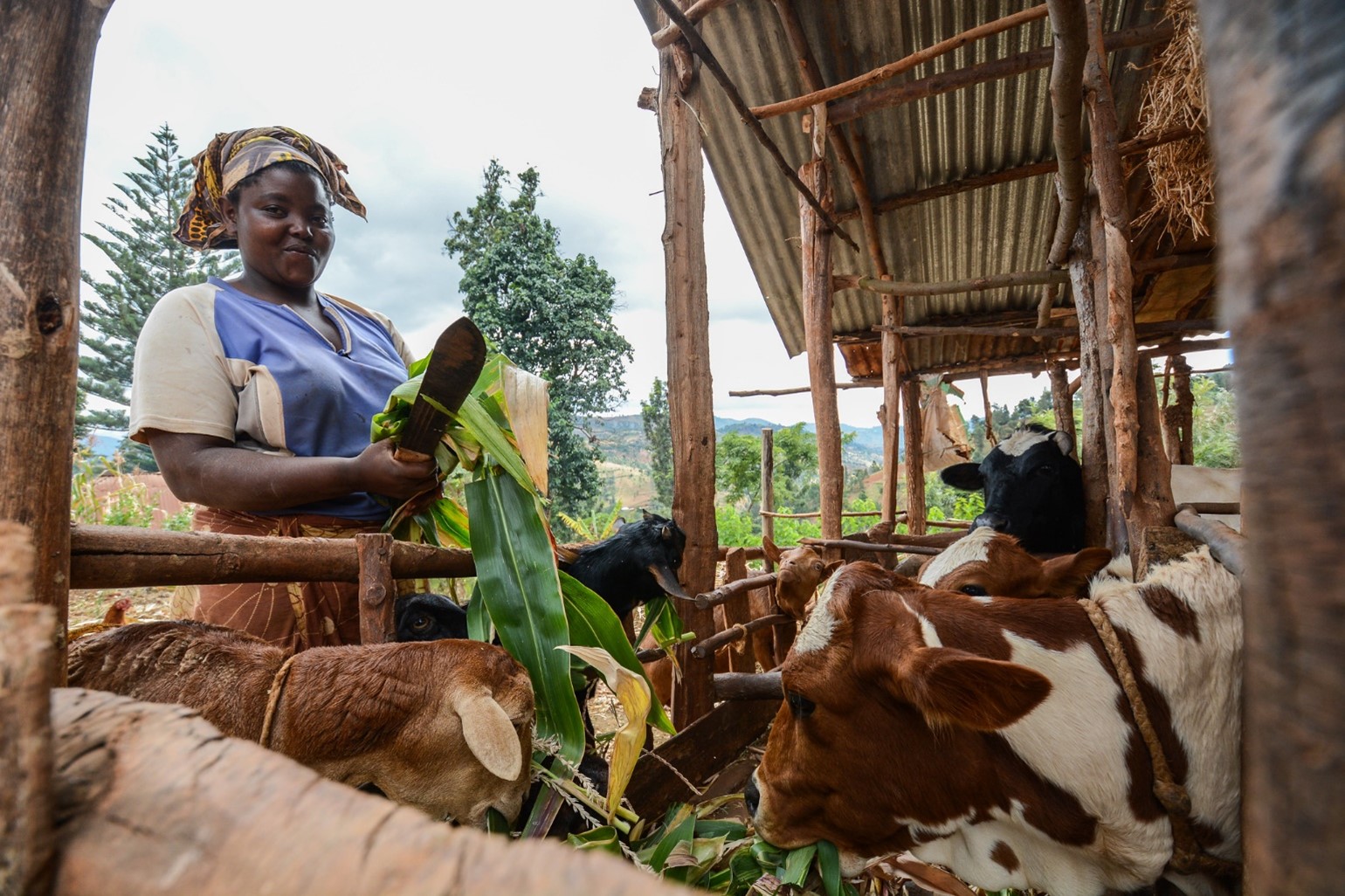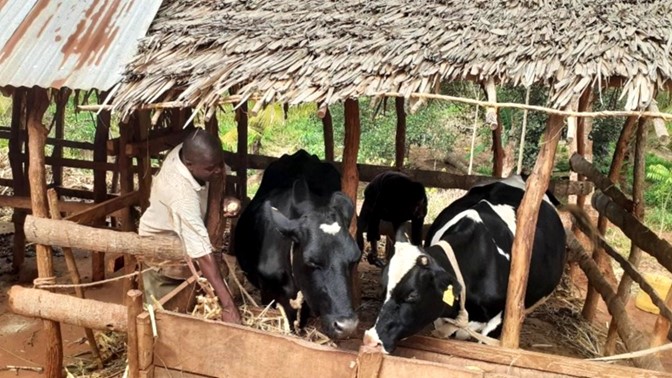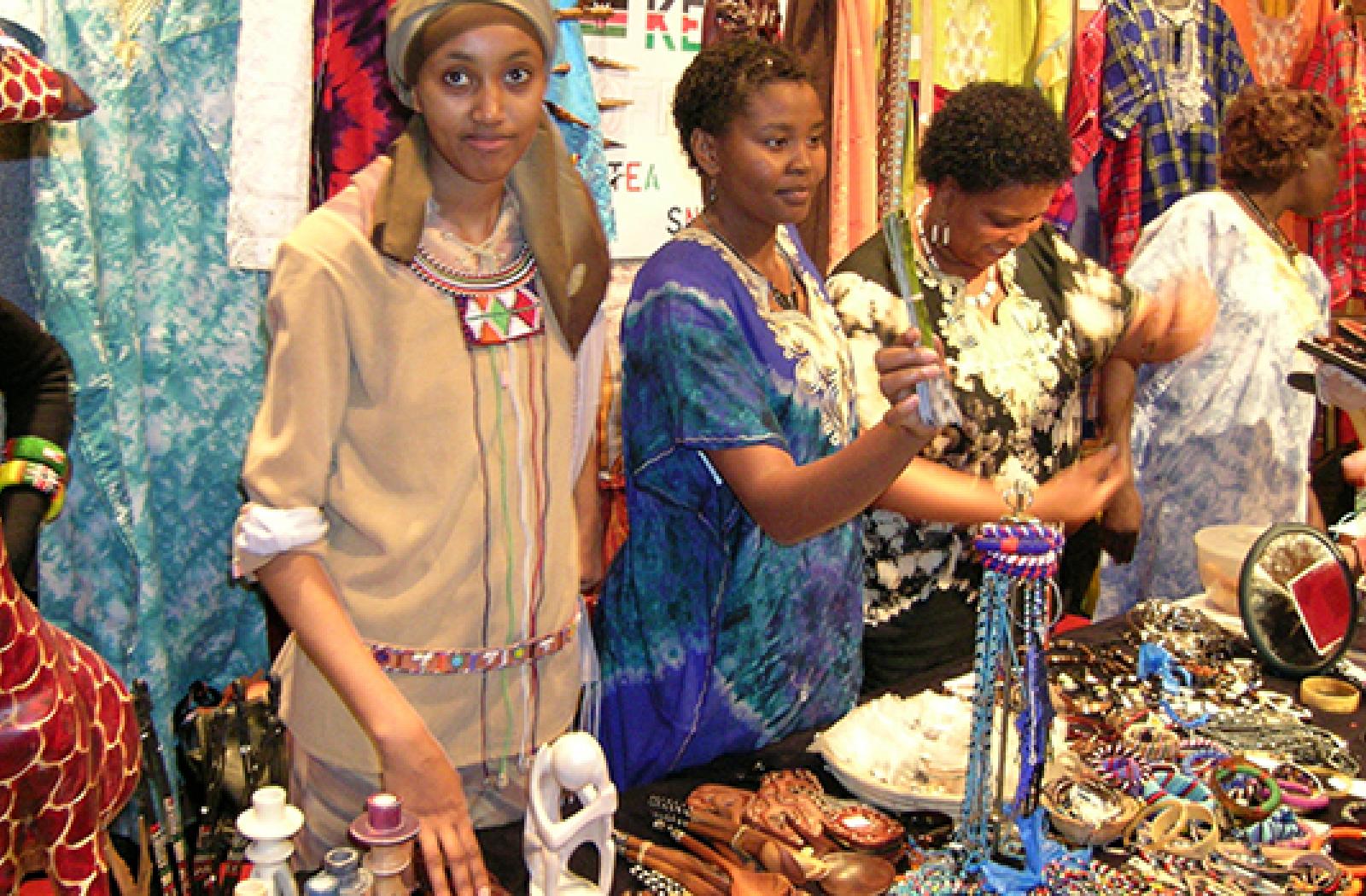Introduction
Thinking about diving into cattle farming in Tanzania?
Well, here’s the lowdown: It’s a hot opportunity with beef exports rising and a growing demand for dairy. But, if you want to make it big with a sustainable and profitable farm, you’ve got to do your homework. From choosing the perfect spot where your cows can graze all year to picking the right breeds for the local scene, and setting up everything from infrastructure to market connections – it’s a whole game plan.
This guide breaks it all down, gives you the nitty-gritty details, and even throws in some real-life examples for different locations in Tanzania. Consider it your go-to handbook for starting your cattle farming adventure.
1. Choose a Location

To choose a good location for your cattle business in Tanzania, consider the southern higherlands for year-round grazing opportunities. Evaluate potential locations based on factors like land availability, climate conditions, access to infrastructure, and distance from major urban areas.
The southern higherlands, including areas like Mbeya, Iringa, and Ruvuma, experience long rains from March to May and short rains from October to December, making them ideal for year-round cultivation.
Survey the availability of freehold, leasehold, or community grazing lands in priority regions. Aim to secure a 50-100 acre plot to accommodate a breeder herd of 50-100 cattle and for feeding production purposes.
Locations such as Uyole near Mbeya offer vast grazing land, convenient rail infrastructure, and proximity to export markets in Dar es Salaam and Zambia. Take these factors into account as you make your location choice.
When evaluating land suitability and usage costs, it’s important to conduct soil testing to determine pH levels and mineral content before preparing the land. Additionally, surveying for grazing acreage, setting boundaries, and assessing carrying capacity are crucial steps.
Calculating the costs associated with freehold purchase, long-term leases, or short-term rentals is essential in financial planning. Moreover, if utilizing village grazing lands, it’s important to account for additional community payments.
2. Select Cattle Breeds Matching Local Conditions
To select cattle breeds that suit local conditions, do the following:
- Opt for resilient indigenous breeds such as the Tanzanian Shorthorn Zebu or Boran, particularly in dry central regions.
- Explore highly productive crossbreeds like Boran x Holstein Friesian, ideal for smallholder farms.
- Exercise caution when importing specialized dairy breeds, ensuring adaptability to local conditions.
- Consider rearing both beef and dairy herds to diversify income streams.
- Budget between $800 to $2,000 per head, aiming for a 60:40 female to male breeder cattle ratio.
3. Prepare Infrastructure for Feeding, Housing and Handling
To prepare infrastructure for feeding, housing, and handling for your cattle business, construct enclosed structures with ventilation and shade/wind barriers. Source reputable fencing companies for paddock divisions and perimeter security.
Install quality watering troughs and plumbing line from borehole/local water sources. Import feed distribution carts/mixers and manure scrapers affordable for small farms. Setup solar, generator, or biogas energy solutions for lighting, heating, and cooking.
4. Know About Government Policies, Regulations and Licensing
To delve into cattle farming in Tanzania, it’s crucial to acquaint yourself with governmental policies and regulations. Start by reviewing Tanzania’s National Livestock Policy, which outlines the country’s priorities and incentives for cattle farming. Additionally, ensure compliance with requirements for environmental impact assessments set forth by the National Environment Management Council.
Adhering to safety regulations and standards mandated by the Tanzania Food and Drugs Authority is imperative for the well-being of your operation. Moreover, secure a district council permit for water usage from boreholes and land occupancy to operate within legal bounds.
Navigating the landscape of licensing and documentation is essential. Obtain an Individual Farmer’s Certificate of Registration from the Tanzania Revenue Authority to establish legitimacy. Following inspection, acquire a stock farm license from the Ministry of Livestock. For larger-scale operations, formalize your corporate structure and register your business name accordingly.
It’s also critical to meticulously document all cattle purchases and movements using the Government Livestock Identification, Registration, and Traceability System to ensure transparency and accountability within your enterprise.
5. Build Local Community Agreements and Partnerships
To establish strong local community agreements and partnerships for your cattle business in Tanzania, it’s crucial to engage with district officials and village leaders prior to acquiring community plots. This initial consultation sets the stage for formalizing terms regarding land-use payments, integration of cattle, and resource usage.
Additionally, consider hiring and training assistant herdspeople from the local villages to foster a sense of community involvement and ownership in the project. Investing in community infrastructure, such as wells or improvements to local schools, further solidifies the relationship and benefits both the cattle farming initiative and the surrounding community.
6. Buy Starting Stock
To strategically buy starting stock for the cattle farming business, you need to acquire weaned calves or pregnant cows from reputable breeders with confirmed health certificates.
Quarantine new arrivals for 30-60 days, provide vitamin supplements, and consult veterinarians for integration with the resident herd. Expect to pay $1,200-1,800 per head for pregnant crossbreed heifers or cows.
Diligently manage the herd by supplying sufficient fodder, hay, and silage with protein/mineral supplements. Keep detailed records of feed intake, weights, conception rates, and calving ease.
Monitor daily health and nutritional statuses to identify issues early and promptly consult a veterinarian for illness symptoms or injuries and maintain clean pens and ensure annual deworming for all cattle.
7. Import Permits and Quarantine Procedures
To import livestock purchases from abroad, such as boran breeding stock, it is necessary to apply for a special import permit from the Director of Veterinary Services.
Also, a quarantine station must be prepared to meet minimum space and health monitoring requirements. During the importation process, expect veterinary examinations, documentation checks, as well as expenses for testing and treatment.
These procedures are crucial to ensure the health and safety of the imported livestock and to comply with regulatory standards set by the veterinary authorities.
8. Explore Marketing and Sales Channels
To market your cattle farming business in Tanzania, explore some marketing and sales channels way before production begins. Survey target market preferences on taste, texture, packaging, volumes.
Get licensed for export sales to maximize revenue potential. Partner with contracted aggregators for easier market access sans scale. Offer premium grass-fed beef or niche dairy products to find customers. Consider on-site accommodation to promote farm stays and citizen science.
Recap
Starting a cattle farm in Tanzania holds promise with increasing beef exports. Success requires:
Selecting a strategic location in the Southern Highlands like Mbeya, Iringa, and Ruvuma for year-round grazing and market proximity. Choosing resilient local breeds such as Tanzanian Shorthorn Zebu or Boran to thrive in local conditions.
Investing in essential infrastructure like housing, fencing, and water supply for the herd’s well-being. Understanding and complying with Tanzanian livestock regulations and obtaining necessary permits. Building positive community relationships by engaging with local officials and investing in community infrastructure. Strategically buying starting stock and exploring marketing channels early for a purposeful venture.


















